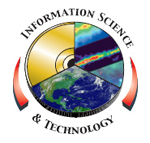
Please Note: The content on this page is not maintained after the colloquium event is completed. As such, some links may no longer be functional.
Gerald Potter and Thomas Maxwell

Visualizing large data sets with the Ultra-scale Visualization Climate Data Analysis Tool (UV-CDAT)
Wednesday, October 7, 2015
Building 3 Aud 11:00 AM
(Coffee and cookies at 10:30 AM)
One of the many "big-data" challenges facing scientists today is how to best visualize and interact with large data sets that reside on remote servers. For example, in climate science the 5th Coupled Model Intercomparison Project (CMIP5) produced more than 3.5 Petabytes and upcoming numerical experiment will produce an order of magnitude or more data.
NASA scientists working with groups supported primarily by the Department of Energy, and several private firms has developed a comprehensive platform called the Ultra-scale Visualization Climate Data Analysis Tool (UV-CDAT) that can easily be used on a laptop or a visualization compute server. One of the packages in UV-CDAT includes interactive 3D data exploration, hyperwall and stereo visualization which provides user-friendly workflow, python, and GUI interfaces for advanced visualization and analysis of climate data at a level appropriate for scientists.
Use cases will be demonstrated that show the three-dimensional growth of forecast errors in numerical weather prediction, a new way to look at trend analysis using a three-dimensional Hovmöller diagram, study of the three-dimensional structure of clouds liquid and ice content, and animation of high frequency reanalysis data both in two and three dimensional space.
UV-CDAT presents a novel architecture that seamlessly integrates a comprehensive workflow and provenance architecture with interactive climate data analysis and visualization tools. This end-to-end application enables scientists to engage in exploratory analyses that were previously difficult or intractable due to the size and complexity of the datasets and, using DV3D, seamlessly couple these analyses with advanced visualization methods.
Dr. Gerald L. Potter is a Senior Project Scientist at the Climate Model Data Services, Computational and Information Sciences and Technology Office, NASA Goddard Space Flight Center. He is retired from the Lawrence Livermore National Laboratory (LLNL) where he helped establish the Program for Climate Model Diagnosis and Intercomparison (PCMDI). His research was focused on understanding feedbacks in climate models. After retirement he joined the group at NASA to assist with preparing climate model, observations, and reanalysis data for distribution though the Earth System Grid Federation. In the process of preparing and studying data for distribution, he has worked with Tom Maxwell to explore new ways to visualize climate data using tools developed at LLNL and GSFC. Jerry received his Ph.D. from UCLA.
Dr. Maxwell is a senior research computer scientist at the NASA Center for Climate Simulation, Goddard Space Flight Center. He is currently developing technologies to facilitate interactive analysis and visualization of the ultrascale datasets being generated by global climate models. He is the developer of CDAS, DV3D and the Spatial Modeling Environment (SME). His previous research directions include spatial modeling of ecosystems, 3D modeling of point cloud (LIDAR) data, and bio-inspired machine learning. His Ph.D. in physics from the University of Maryland focused on neural networks, pattern recognition, and massively parallel computing.
IS&T Colloquium Committee Host: Jim Fischer
Sign language interpreter upon request: 301-286-7040
